If your students are anything like the ones I’ve had, getting them to revise their writing is no walk in the park. Sometimes getting them to write a first draft is enough of a challenge. Going back and reworking their writing is the last thing they want to do after they finally get their thoughts down on paper!
Not only are some students reluctant to make significant changes to their writing, but revising can also be difficult to teach. This is because revising itself is such a complex process. And we often teach revising as just one step in the writing process, but it isn’t quite that simple in reality.
Think for a moment about how you write an email. You probably spend a few seconds thinking about what you want to say, compose a few lines, reread them, fix mistakes and do some rewording, and then plan out your next few sentences.
As you can see from this example, you, as a proficient adult writer, don’t wait until your draft is finished in order to revise and edit. Revising actually happens during and after the writing process, and we often do it more than once.
Revising is difficult to learn and difficult to teach. But despite these challenges, it’s absolutely essential that we do teach our students to revise. Young writers need to learn that rethinking and reworking a piece of writing is a normal part of the writing process.
We want our students to be able to consider whether or not the writing meets the needs and interest of their audience. We want them to think about word choice and sentence structure. We want them to make changes that go beyond just fixing a misspelled word or putting in a period.
So how do we accomplish this? During my time in the classroom, I’ve tried quite a few different things to get my Kindergarten, first grade, and second grade students to revise their writing. In this post, I’ll share three different strategies that are a) supported by research and b) have worked well for me!
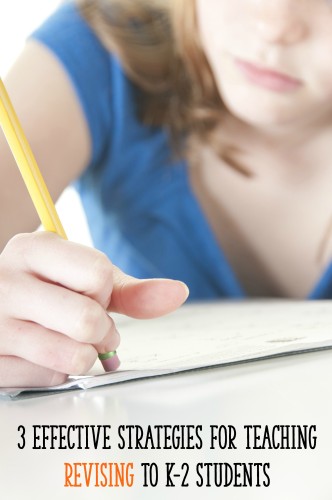
1. Provide students with specific criteria to which they can compare their writing.
We need to clearly communicate to our students what they should be striving for. Does their story need to have three parts? Does an opinion piece need 2 or more reasons to support the opinion? Kids need to know our expectations.
Using rubrics and checklists is a great way to communicate our expectations to students. When we introduce a rubric or checklist, we need to spend a significant amount of time modeling how to use it, so that it truly serves as a tool for our students. You can use a sample piece of writing to think aloud as you use a rubric or checklist to rate it.
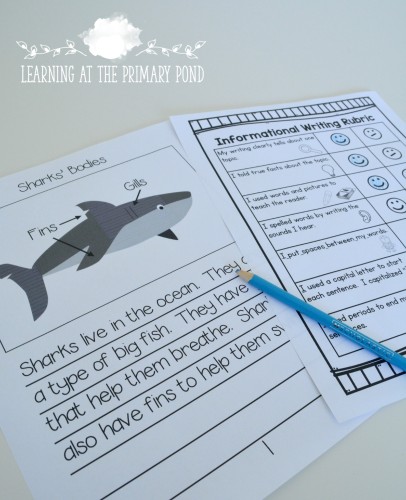
This photo shows a sample writing piece and rubric from my K-2 Revising & Editing Toolkit
A rubric can be overwhelming to young students because there’s just so much text on it. To help with this, I recommend including images or some kind of visual on your rubric (especially for students who aren’t reading yet).
Something else you can do is to physically cut the rubric or checklist up into strips! You can then show students just one strip at a time, model how to use it to evaluate writing, and then give students that one strip to practice with their own writing.

2. Teach students specific revision strategies through the gradual release of responsibility.
In addition to using rubrics/checklists, we also need to teach our students specific ways that they can improve upon their writing.
First, pick one specific revising strategy to teach (i.e. “Today I’m going to teach you how to revise your nonfiction books by choosing a heading for each page”). The K-2 Revising and Editing Toolkit that I just finished has tons of posters to give you ideas about what revising strategies to teach.
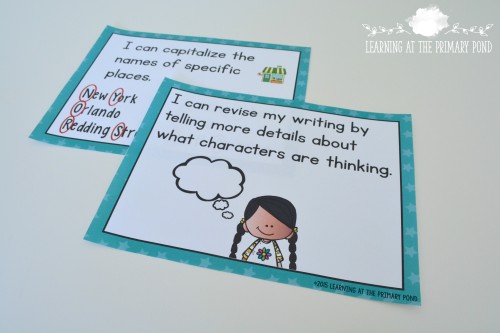
Next, find a sample piece of writing (something you have written, or choose from one of the many samples included in my K-2 toolkit LINK). Model and think aloud as you use that one strategy to revise the piece of writing.
Then, engage students in some guided practice (with a different sample of writing, or have them help you continue to revise the original sample). Finally, have students try out that same strategy to revise their own writing.
When you’re teaching students a specific revision strategy, you can support their learning by providing visuals. The posters in my K-2 Revising and Editing Toolkit give you “I can” statements and pictures to use during your minilessons. You can also give students the matching strategy card for the lesson’s revision strategy. Students can keep these strategy cards in their writing folder or on a small binder ring for reference in the future.
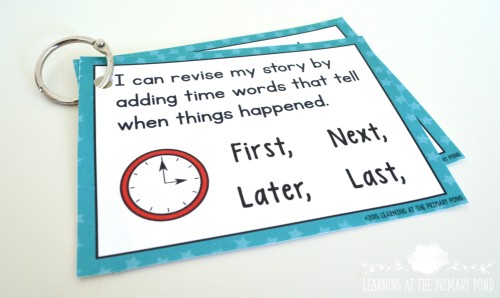
3. Have students engage in peer revision.
Teaching my students how to peer revise has been the single most effective revision strategy I’ve found! Of course, it does take a lot of modeling for students to be able to do it successfully. And you also still have to provide students with clear criteria and teach specific revision strategies.
So that my students engaged in peer revision on a consistent basis, I created a Revising and Editing Table.
The Revising and Editing Table is a special place in the classroom where students go to get help with revising and editing their writing. Students work together at the table, so it runs without your direct supervision.
During writing time, once students are finished with a draft, they head to the table, find a partner, and work together to make both of their writing pieces better.
Here are the specific procedures that students use at the table:
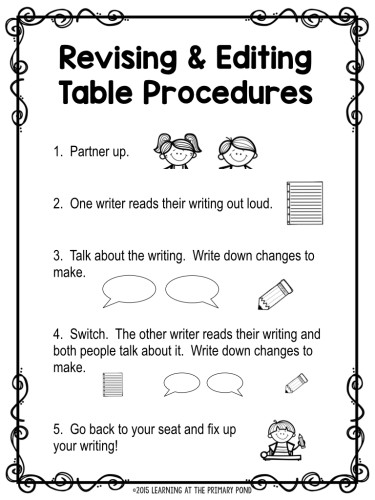
Note that students do not:
- Swap papers (they read them aloud to each other so the listener clearly understands the writing)
- Write on each others’ papers (this does not show respect to the writer), or
- Make changes while they are at the table (the writer jots down ideas on sticky notes and/or a rubric or checklist)
To support students with their peer conferring at the Revising and Editing Table, you may want to consider giving them sentence starters like these from my Toolkit:
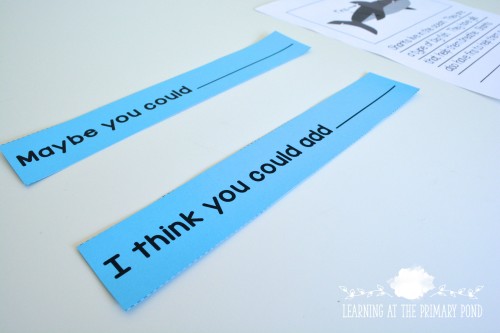
I’ve found that being in a different physical location and getting to work with their friends is extremely motivating for students! Only when I had them use a Revising and Editing table did I see them truly begin to make significant changes to their work.
All three of these revising strategies are supported by the materials in my K-2 Revising Toolkit. The Toolkit contains:
- Revising and editing posters and matching strategy cards
- Over 50 rubrics and checklists for K-2 writers for narrative, opinion, and informational writing + reader responses to text
- Kid-friendly mentor text examples that you can use to teach students to revise and edit
- Materials for making a COPS Editing Flip Book (more on that next week!)
- Conventions cards / awards to recognize students for using good editing skills
- Materials to help you set up and run your Revising and Editing Table, including complete lesson plans to launch the table in your classroom
The materials are a great complement to any writing program, and they also go great with any of my Kindergarten, 1st grade, or 2nd grade writing units! Click on the image below to learn more.
If you have any additional thoughts to share about teaching revising, please do so in the comments! And check back next week for a post on strategies to get students to edit their work. Have a great week!
Resources:
Graham, S., MacArthur, C. A., & Fitzgerald, J. (Eds.). (2007). Best Practices in Writing Instruction. New York, NY: The Guilford Press.

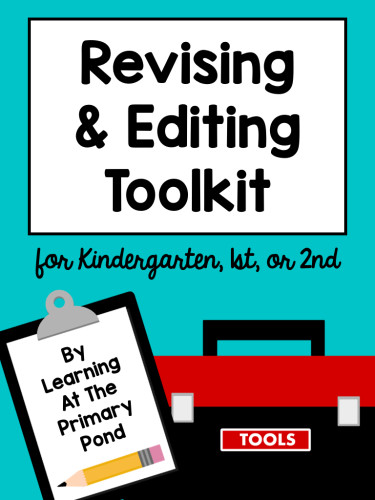
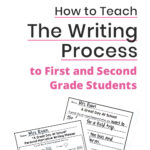
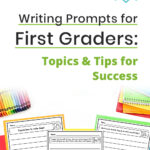
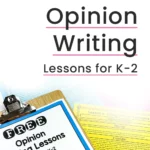
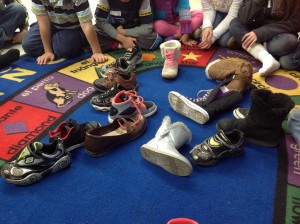

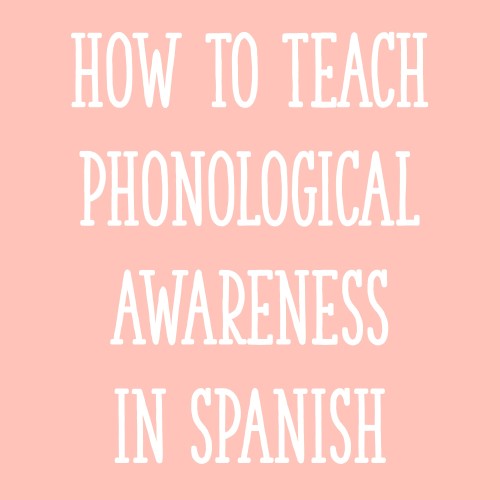






Just a quick question. When do you fit this in your units? As needed, or at a specific time?
Hi Angie, great question! I plan in lessons on revising and editing multiple times throughout my units. We might do a series of lessons on brainstorming and drafting, and then a couple of lessons on revising and editing. We also spend time on revising and editing at the end of the unit. However, I also fit the activities in as needed, as I see how students are doing with their writing. 🙂
Alison
Thank you so much for these tips! Sadly, my second grade class is very dependent on me to help them with revision. I will start to implement these strategies!
I hope they help, Cynthia!!
Alison
Super helpful! What do you do if a student heads to the table and no other student is there? How do you manage that?
Hi Kelly! Good question, and definitely an issue that I’m sure others have encountered! What I would do is say something to the class like “Oh! I see ____ is ready to review his/her writing with a peer. I wonder if there’s another friend in the room who can help!” Almost always, a student (or many!) jump at this opportunity with the little push. Good luck!